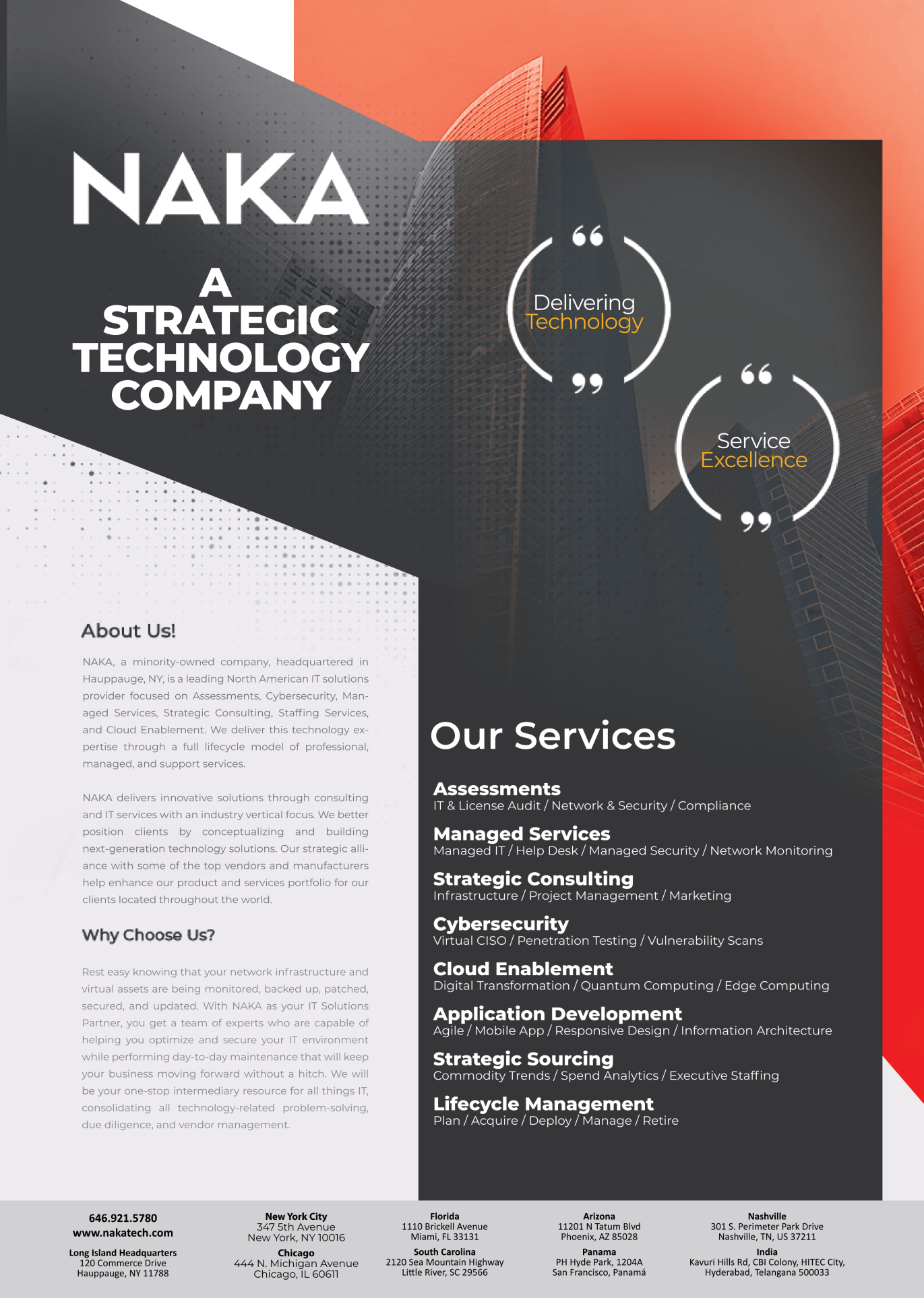What is included in managed IT services?

What is included in managed IT services?
In today’s world, almost every business depends on technology, from sending emails and storing data to managing customers and online sales. But keeping all those systems running smoothly can be a real challenge, especially for small and mid-sized companies. That’s where Managed IT Services come in.
Managed IT Services mean handing over your day-to-day technology needs to a team of experts who take care of everything, from fixing computers and managing servers to keeping your data safe from hackers. Instead of worrying about software updates, network issues, or downtime, your team can focus on what really matters: growing the business.
This approach has become more popular because it’s cost-effective, reliable, and gives businesses access to professional IT support 24/7 without the need to hire a full-time team. Whether you’re running a local startup or managing multiple offices, managed IT services can make your operations smoother, faster, and more secure.
In this blog, we’ll break down exactly what’s included in managed IT services, so you know what to expect when you partner with an IT service provider.
What Are Managed IT Services?
Managed IT services are professional technology services that a company hires from an outside provider to take care of its IT needs.
Instead of running an entire IT department on their own, businesses can partner with a Managed Service Provider (MSP), a team of tech experts who handle everything from computers and networks to security and data backups.
In simple words, managed IT services mean handing over your IT work to professionals who manage it for you on a regular basis. This helps businesses stay focused on their main goals while the experts make sure that the systems run smoothly and safely.
How It Works
Managed IT services work on a monthly or yearly plan. You pay a fixed fee to the service provider, and they monitor, maintain, and support your technology round the clock.
If any issue comes up, like slow internet, server downtime, or security threats, they fix it remotely or on-site before it turns into a big problem.
This model is also known as a proactive approach, because MSPs don’t wait for things to break; they constantly check and prevent problems before they happen.
Core Inclusions in Managed IT Services
Managed IT services cover a wide range of solutions that help keep your business technology running smoothly every single day. These services are designed to make sure your systems stay secure, updated, and ready to perform whenever you need them.
Below are the main services that are usually included in a managed IT package.
1. Network Monitoring and Management
Your network is the backbone of your entire IT system. Managed service providers keep an eye on it 24/7 to make sure everything runs without interruption. They track network performance, identify any slowdowns, and fix issues before they cause downtime.
In simple words, they ensure your internet, servers, and connected devices stay fast and reliable, so your team can work without worrying about sudden breaks or glitches.
2. Data Backup and Disaster Recovery
Every business handles valuable data, client records, financial reports, and project files. Managed IT services protect this data by setting up automatic backups on both cloud and local servers.
If something goes wrong, like a system crash, accidental deletion, or cyberattack, your data can be restored quickly. This means your business can get back on track without major losses or delays.
3. Cybersecurity and Threat Protection
Cyber threats are everywhere, and they’re getting smarter every day. A managed IT service includes strong security tools to keep your data safe. This includes firewalls, antivirus software, spam filters, and regular threat monitoring.
Your provider also runs security updates and teaches your staff how to spot suspicious emails or links. The goal is to create multiple layers of protection so hackers stay out and your data stays safe.
4. Cloud Services and Management
Cloud computing has become a big part of modern business. Managed IT services help you set up, manage, and optimize your cloud systems, whether it’s Google Cloud, Microsoft Azure, or Amazon Web Services.
They make sure your cloud storage is secure, your files are easy to access from anywhere, and your software runs efficiently. Plus, they assist with cloud migration if you’re moving from traditional storage to the cloud.
5. IT Helpdesk and User Support
Whenever employees face a technical problem, slow computer, login issue, software error, they can reach out to the helpdesk.
Managed IT teams provide quick support through chat, phone, or remote access. This means your staff gets instant help without needing an in-house technician. Most providers offer 24/7 assistance, so issues are solved even outside normal work hours.
6. Hardware and Infrastructure Management
This part covers all your physical IT assets, computers, servers, routers, printers, and more. Managed service providers handle maintenance, updates, and repairs for these devices.
They make sure your equipment stays in top condition and is replaced on time when needed. Regular checks prevent unexpected breakdowns and improve system performance.
7. Software and License Management
Keeping track of software updates and licenses can be a headache. Managed IT services take care of it for you.
They handle software installations, updates, renewals, and compliance checks, ensuring your tools are always up to date and legally licensed. This reduces security risks and keeps your systems running smoothly.
8. IT Consulting and Strategy
Beyond fixing issues, managed service providers also help you plan for the future. They offer expert advice on new technologies, system upgrades, and digital transformation strategies.
This consulting helps your business grow smarter, using IT as a tool to increase productivity, cut costs, and stay ahead of competitors.
Final Words
Managed IT services are not just about fixing computers or solving network problems, they’re about building a reliable system that supports your entire business. By handling everything from data backups to cybersecurity and daily tech support, a managed IT partner helps your team stay focused on what truly matters, growing your business.
In today’s fast-moving digital world, even a few minutes of downtime can lead to lost opportunities. That’s why having experts who monitor, manage, and protect your technology 24/7 can make such a big difference.
Whether you’re a small startup or an established company, managed IT services offer peace of mind, predictable costs, and professional guidance. In short, it’s like having your own IT department, without the heavy cost or stress of managing it yourself.
If you’re ready to simplify your IT operations and strengthen your business systems, managed IT services might just be the smartest investment you make this year.
Frequently Asked Questions
Are managed IT services only for big companies?
Not at all. Small and medium-sized businesses benefit the most from managed IT services because they get access to expert support without having to hire a full in-house team. It’s a smart way to save costs while keeping technology reliable and secure.
How much do managed IT services cost?
The cost depends on the size of your business, the number of users, and the level of service you choose. Most managed service providers (MSPs) charge a fixed monthly fee that can range from basic monitoring plans to full-service IT management packages.
Can I customize the services I get from a managed IT provider?
Yes, absolutely. Managed IT services are flexible. You can choose only the services your business needs, like network management, cybersecurity, or data backup, and scale up as your company grows.
What’s the difference between co-managed and fully managed IT services?
In co-managed IT, your in-house IT team works together with the managed service provider. The MSP handles certain parts like monitoring or cybersecurity, while your internal team manages daily tasks. In fully managed IT, the provider takes care of everything, from maintenance and security to updates and user support.
How do managed IT services improve cybersecurity?
Managed IT providers use advanced tools and constant monitoring to protect your systems from threats. They update software regularly, manage firewalls, scan for vulnerabilities, and provide training to help employees avoid phishing and other attacks.
What happens if my system crashes or data is lost?
Most managed IT service plans include automatic backups and disaster recovery solutions. This means your data is safely stored and can be restored quickly, reducing downtime and preventing major losses.
How do I choose the right managed IT service provider?
Look for an MSP with experience, strong client reviews, quick response times, and clear service-level agreements (SLAs). Make sure they offer transparent pricing, 24/7 support, and flexible plans that fit your business size and goals.



